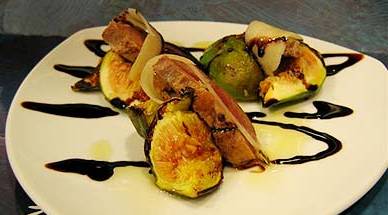Cheese production is one of the oldest culinary traditions known to man, having come into the world with the first dairy farms. For hundreds of years, techniques for transforming milk and cream into more solid food were developed, maintained and improved. Special cheeses were developed in different regions to conform with local types of milk, climate, materials and tastes. And then the Industrial Revolution arrived and before long, small-scale, local, traditional, patient and primitive production methods made way for the automatic churns and presses of the large dairies. The latter introduced pasteurization techniques to maintain long life, instead of the old aging, salting and smoking. Some cheeses gained longer life and improved texture, but most lost their strong and special flavor, became rare or vanished forever.
What is suited to Europeans is not necessarily suited to Israel, and it turns out that when we don't try to pretend to be what we aren't, we end up with the best results. For instance, Israeli cottage cheese is one of the most frequent flyers to Europe - a nice gift for Israelis whose long stays abroad have soured them on the taste of French, Dutch or Swiss cheeses, and who now hanker for a little taste of home. Similarly, it is hard to find competitors for plain old, fresh, low-fat white cheese in foreign supermarkets. The light, young and soft cheeses are best suited to the Mediterranean climate. They naturally and effortlessly blend with the vegetables and fruits that grow here in abundance, and can be used in making countless delicacies without much effort.
Another advantage that soft cheeses have over the hard, mature cheeses: While it is complicated and almost impossible to make the latter at home, the work of preparing the former is minimal. As with every other homemade delicacy, the variety of options and flavors that can be added to homemade cheeses is nearly unlimited. Sometimes it is the simple, unspoiled cheese that one has a yen to spread on a thick slice of heavy country bread.
 Spicy labaneh balls from sheep's milk
Spicy labaneh balls from sheep's milkEven if you are accustomed to buying the slightly sour, creamy labaneh cheese, it is worth preparing it at least once at home, if only to understand how simple the path is from yogurt to labaneh. Of course, you can prepare labaneh from the more available and cheaper cow's milk with excellent results, but sheep's milk will generate particularly special results. You can either leave out the spices to get natural labaneh, or add them later on, as you see fit. The following recipe yields about 500 grams of cheese.
1.5 liters whole sheep's milk (or cow's milk) yogurt
200 gr. sour cream, 15 percent fat
1.5 tsp. salt
1 tbsp. lemon salt (citric acid)
1.5 tsp. freshly ground black pepper
1 small hot red pepper, cut into tiny cubes (it is hard to predict how hot this will turn out, so taste and use accordingly)
1-2 tbsp. of one of the following fresh spices, cut finely: thyme, za'atar (wild hyssop), oregano, mint, tarragon
superior olive oil (for serving)
1. Mix all ingredients (except the olive oil) thoroughly in a bowl. Line a large colander (a simple plastic pasta colander is just right) with muslin cloth, a clean cloth diaper, a sheet or an old pillowcase.
2. Put the colander in the sink or in a larger bowl, and pour the mixture onto the cloth. Leave outside the refrigerator for 12-24 hours (if the colander is placed in a bowl, it must be emptied every few hours, so that the labaneh is not in contact with the liquid).
3. Transfer to the refrigerator for an additional 12-24 hours. (This means a total of 24-48 hours; the longer the preparation time, the harder and more concentrated the labaneh. Those desiring a softer and slightly liquid texture can strain the yogurt for less time, but this will make it harder to form the labaneh into balls.)
4. Remove the labaneh from the cloth and form into small balls by hand. Place the balls in a deep dish and cover with olive oil. Serve with pita or good, fresh bread. The balls will stay fresh for several days in a covered bowl in the refrigerator. To preserve the labaneh for a longer period, the balls can be placed in sterilized jars and covered in olive oil.
 Fresh, homemade cheese covered in spices or nuts
Fresh, homemade cheese covered in spices or nutsPreparing fresh, homemade white cheese is simple and easy. The delicate result can be seasoned as much as the imagination allows, using spices or nuts on top of the cheese or mixed into it. Even those for whom the superior flavor is not worth the investment in time, it is worth trying the recipe as an interesting learning process for both adults and children. The ideal room temperature for preparation is approximately 25 degrees Celsius, meaning that now is the perfect time. This is how it used to be done. The following will yield about 350 grams of cheese.
1 liter whole milk, at room temperature or slightly warmer
1/2 liter buttermilk ("Rivion")
1 or more of the following:
ground pistachios, walnuts or hazelnuts
chopped chives or dill
chopped olives
dried chili peppers
paprika
toasted sesame seeds
1. Mix the milk and buttermilk in a glass bowl. Cover with plastic wrap and leave outside the refrigerator for about 24 hours, until the liquids and solids separate. At the bottom of the bowl will be whey, above it a thick layer of curd.
2. Line a large colander with cheesecloth or a clean diaper, and place in a larger bowl. Using a slotted spoon, transfer the curd in the bowl to the cloth-lined colander. Throw away the water.
3. Leave for 3-6 hours outside the refrigerator, and pour off the liquid that has accumulated. Transfer to the refrigerator for another 12 hours or so. The basic cheese is ready, and tastes fine as is, without additions.
4. If you wish to add seasonings or nuts, form small loaves from the cheese and roll them in small dishes containing the various additions. Another option is to forgo this step, and mix the seasonings directly into the cheese
 Cheese MiddleEast
Cheese MiddleEast
 Makes 1 tall ring-shaped or tube cake with a firm moist crumb, lightly dusted with sugar
Makes 1 tall ring-shaped or tube cake with a firm moist crumb, lightly dusted with sugar

















